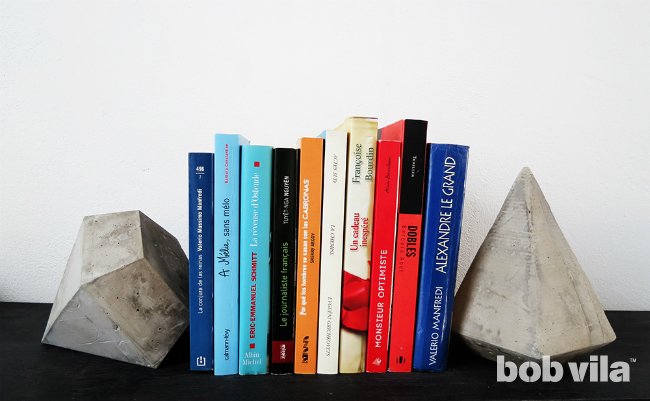We may earn revenue from the products available on this page and participate in affiliate programs. Learn More ›
Wholly malleable yet still a sturdy project material, concrete mix has proven its worth outside of just lawn and garden projects. The versatile supply has come en vogue for many in the interior design world, achieving the trendy industrial-modern quality in a large range of household wares on a seriously small budget. It only takes a bag of mix and a small supply of recycled cardboard to realize just about any shape, from unique pendant lighting to a custom concrete vanity. Given its weight and finish, we fashioned the concrete into a set of DIY geometric bookends—functional art for any set of shelves. The key to achieving those diamond facets is in the molding. Read on for how construct your own.
TOOLS AND MATERIALS
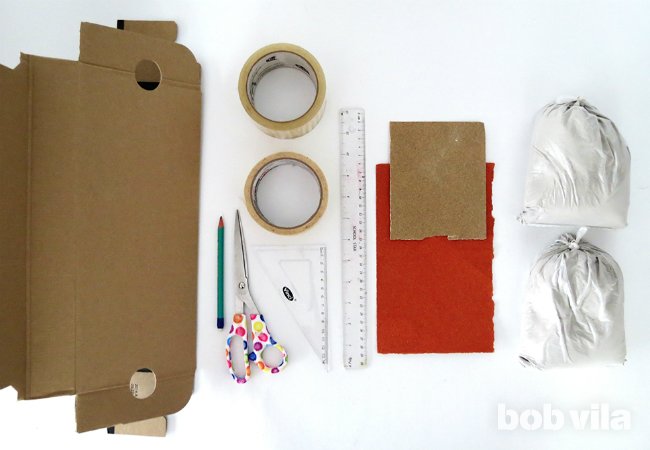
– Cardboard
– Pencil
– Ruler
– Scissors
– Packaging tape
– Masking tape
– 2 plastic buckets
– Dried beans
– Concrete (2.5 pounds for each shape)
– Spoon or trowel
– Sandpaper
STEP 1
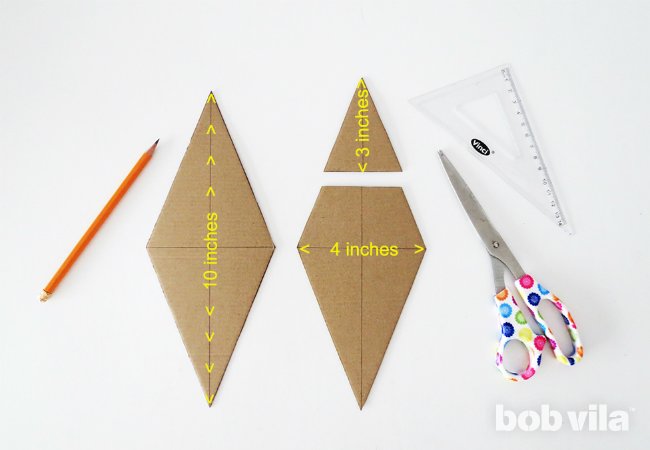
To make the faceted diamond shape, you’ll want to piece together enough cardboard to make your mold. Check the recycling bin! An old shoebox, for example, will work perfectly.
It all begins with a basic two-dimensional diamond. Start by drawing a cross on your cardboard; the vertical line should measure 10 inches long crossed at the exact middle by a shorter, horizontal 4-inch line. Connect the four ends with lines to form a diamond shape, and cut it out of your cardboard. Then, measure 3 inches from one end, draw a straight line across, and cut off the end. Repeat four more times to create five identical pentagons.
STEP 2
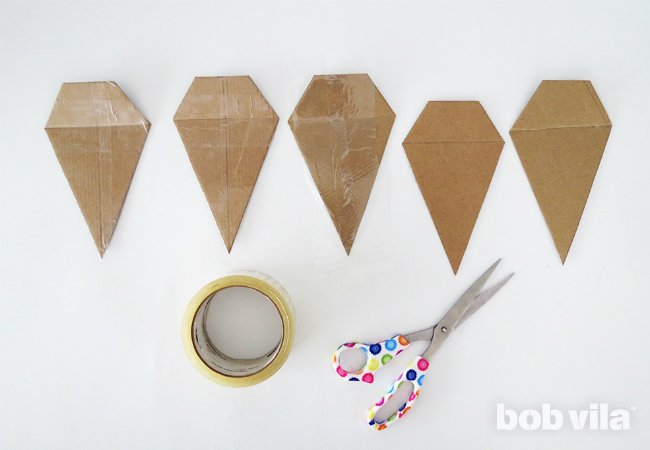
Protect your five cardboard shapes against the moisture of the wet concrete mix by completely covering one side of each with a clear plastic packing tape.
STEP 3
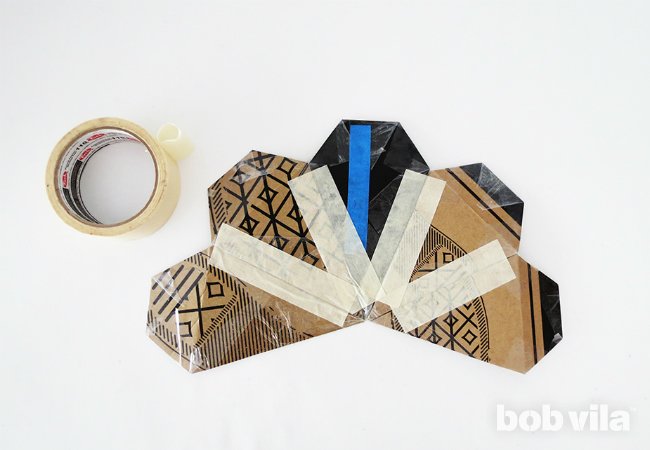
Turn all cardboard so that the side with clear tape is face-down. Lay each piece side by side in the shape of a fanned peacock tail, and tape along the seams. Now fold and crease the short end of each pentagon, right where you initially drew the 4-inch line; the taped side should fold in on itself.
STEP 4
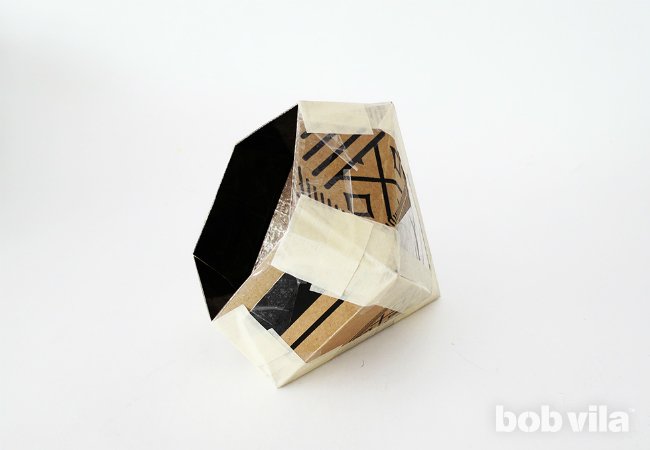
Lift the fan, crease it along the seams, and curl it so that the surface coated with tape makes up the inside of the mold. Tape the two long sides together to complete the faceted cone, and proceed to tape around the top to connect the shorter facets together. Don’t hesitate to reinforce your cardboard mold with even more tape along the outside—you’ll want the shape to be as strong as possible so it’s ready to hold the setting concrete.
Repeat steps 1 through 4 to create another mold for a second bookend.
STEP 5
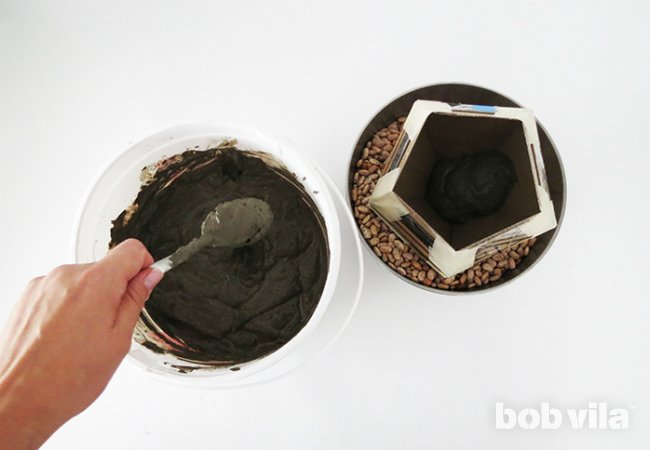
Now, grab your buckets. Fill one that’s slightly larger than your cardboard diamond mold part-way with dry beans. Stand the mold inside (with the point down and the opening facing out the top), then continue to fill around it so that it doesn’t topple.
In the second bucket, use a spoon or trowel to mix up the concrete; follow the packaging’s instructions on ratio of water to mix carefully. Continue blending until you have a smooth mixture, then use your stirring utensil to help pour the concrete into your mold.
STEP 6
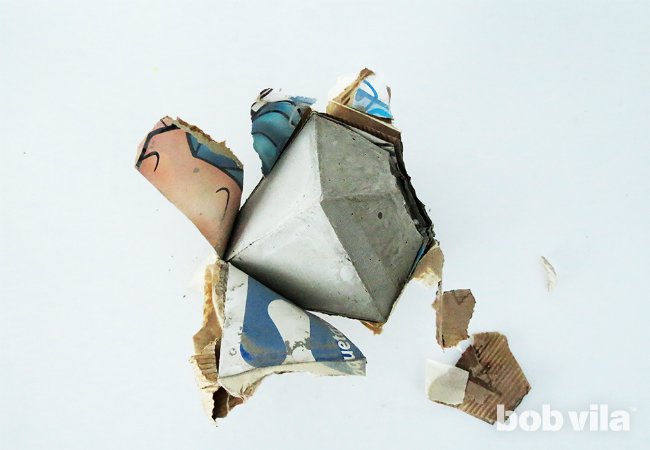
Let the concrete dry completely—it should take approximately two days—before peeling away the cardboard. When in doubt, check your mix’s instructions regarding dry time.
STEP 7

Once your bookend is unwrapped, leave it to dry and cure for two more days. After those 48 hours pass, you can sand the piece to smooth out any small imperfections.
Remove leftover dust with a soft bristled brush and rinse the concrete diamond under clear water before setting it out on your bookshelves. Depending on the facet that lays flat, you can stand it tall or on one of its sides at the end of a row of books. However you position it, take pride in your new artful bookends—they’re just another reason to give pause at your bookshelves.
